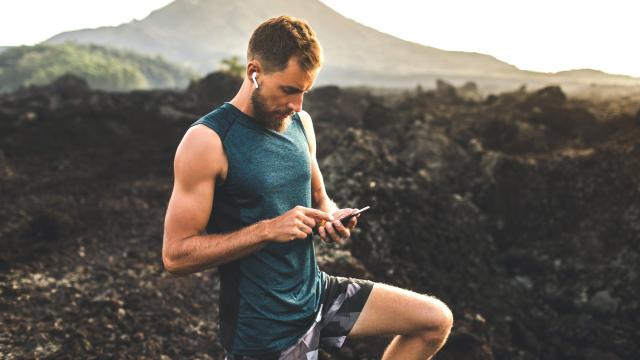If you’re running or hiking alone, it’s always smart to let somebody know your plans and when you expect to be back. Better yet, apps with location sharing can allow your partner or friend to know exactly where you are at any moment. But there’s a way to go even beyond that: Use Strava’s Beacon feature, now available even to us plebes on free accounts.
Other running apps offer location tracking as well, with varying feature sets. For example, Runtastic offers their tracking feature for free, but your contacts also need the Runtastic app to see where you are. Runkeeper can send your tracking information to non-Runkeeper users via text, but you need a premium subscription to turn it on.
Where general-purpose location sharing apps like Find My Friends only share your location and a few other data points, Strava and its ilk know that you’re on a run (or a hike, or a bike ride) and can tell your contacts what you’re doing. If I track a run with Strava and share the link with my husband, he can see:
- What time I started running
- Where I am now
- How much distance I’ve covered
- Whether I’m tracking the run or have paused it
- How much battery my phone has left
These can all give clues to whether I might need help. If I’ve stopped for a long time without pausing the run, he might wonder what’s up. If he knows I’ve gone out for a 16 km run and I’m closing in on km eight, he can see that I’m more or less on track.
There are caveats, of course: If you can’t get a GPS reading or don’t have cell data where you are, the tracking might not stay updated. And the free version of Strava’s feature is only available for phones, not for an Apple Watch or Garmin on its own (although Garmin does have its own location-sharing feature).
How to use location-sharing apps for safety
With Beacon or another location sharing service enabled, you’ll still need to let your trusted person know when you’ll be back. But now, if you don’t return, they can easily see where you are. If you’re in trouble and can text that you need help, the location tells your person where to find you. And even if you can’t text, by the time they check in on you, they’ll be able to see where you are and how long you’ve been there.
Whenever I hear about new features for location tracking for running, I think about that night in 2012 that I made a wrong turn on a long-distance trail run and found myself utterly lost as the sun was setting and my phone’s battery was dying. I called my husband in a panic, because I knew I had to be close to a road, but I couldn’t find the road. I was able to get latitude and longitude coordinates from Google Maps, and text them to him, and then I had to wait for him to call me back after he’d consulted a stack of paper trail maps I had left at home. If I hadn’t been able to get the coordinates, or if my battery had died just a few minutes sooner, the night would have ended very differently.
I think about that every time I head out for a long trail run. I now use Google’s location sharing (which wasn’t available at the time), but next time I head out into the wilderness, I’m going to turn on a Strava Beacon.

Leave a Reply
You must be logged in to post a comment.